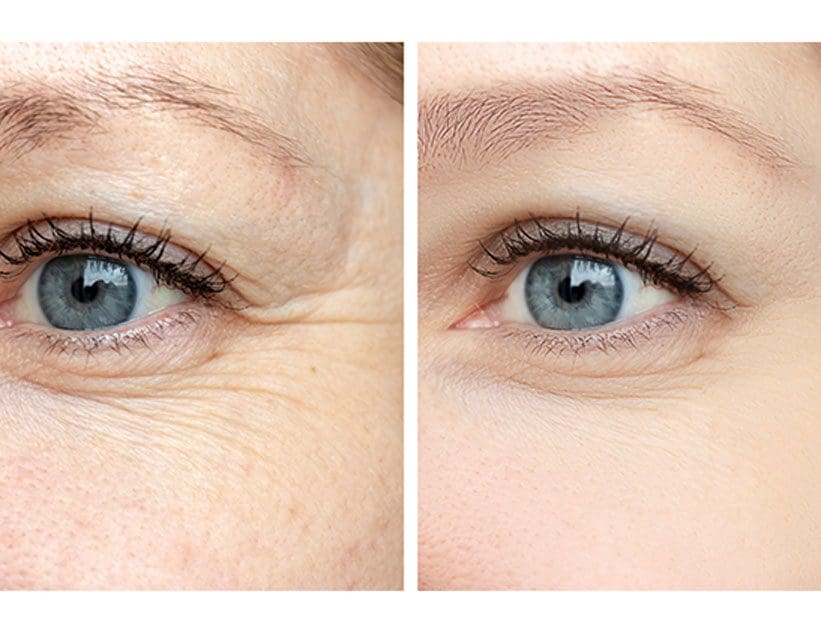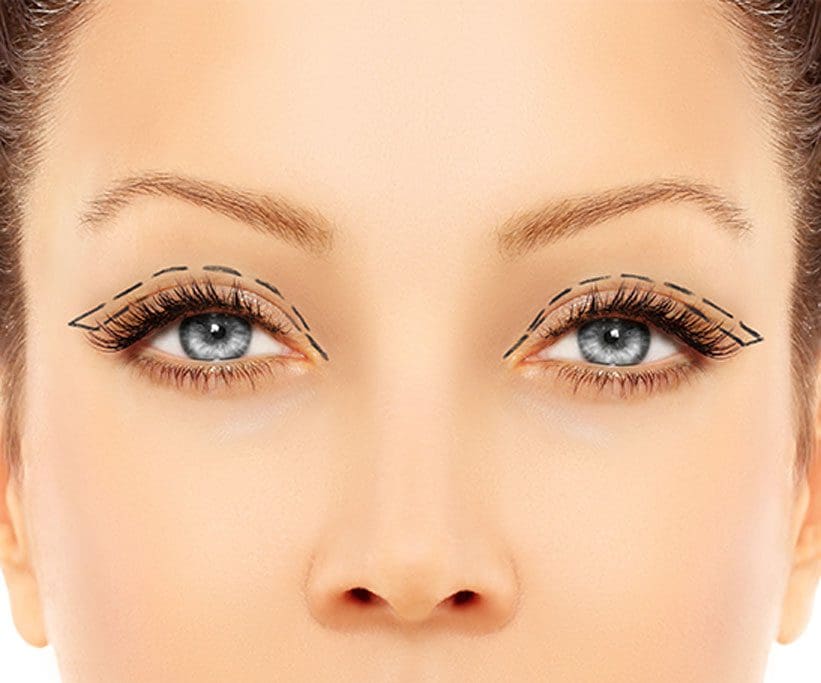New Skin & Body
LET YOUR EYES SHINE AGAIN
New Skin & Body
what is Blepharoplasty?

FROM

Like the face and neck, the eyes age over time and can develop signs that make a person look older than they feel. Blepharoplasty is eyelid surgery that can help soften the signs of aging in the eyes and create a more youthful appearance.
New Skin & Body
Signs of Aging in the eyes

Dark circles may form as a result of the loss of fat and bone. Shadows and hollows from underlying volume loss create a concavity that may lead to the appearance of dark circles. Other factors include loss of collagen, congestion of blood vessels (caused by allergies and stomach sleeping), and true hyperpigmentation.
Wrinkling and sagging may be caused by thinning skin, loss of elasticity, dynamic creases, and folds from loss of volume. Over time, collagen breakdown begins to exceed collagen production leading to a thinner epidermis. Elastin production may also slow down, causing the eyelids to droop. Making repetitive expressions, such as squinting, can cause crow’s feet. Another unavoidable consequence of aging is the loss of fat and bone, which removes underlying support and leads to sagging skin and hollows.
New Skin & Body
Benefits of a Blepharoplasty

Blepharoplasty can treat loose or sagging skin that creates folds in the upper eyelid. A blepharoplasty can also reduce bags under the eye and fatty deposits that appear as puffiness in the eyelids. Patients with drooping lower eyelids that reveal white below the eyelids or excess skin and fine wrinkles in the lower eyelid may notice a significant improvement in their appearance after a blepharoplasty.
New Skin & Body
Who is a Candidate?
The following individuals may be good candidates for blepharoplasty:
- Nonsmokers
- Healthy individuals with no health conditions that can impair the healing process
- Individuals with healthy eyes
- Individuals in good mental health
- Individuals with realistic goals
Some patients may have conditions such as eyelid ptosis, a condition caused by stretching of the upper eyelid muscle. During the initial visit, Dr. Pollei will thoroughly examine the patient’s face to determine if a blepharoplasty is appropriate for them.
New Skin & Body
WHAT TO EXPECT DURING BLEPHAROPLASTY
New Skin & Body
schedule an appointment
